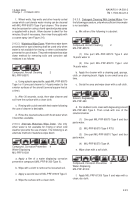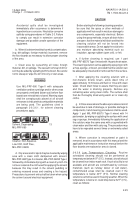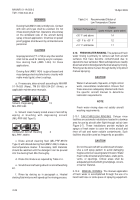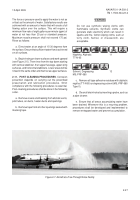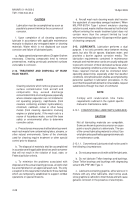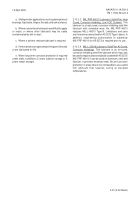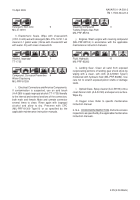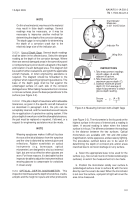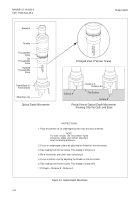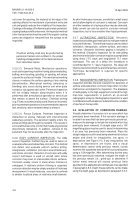TM-1-1500-344-23-2 - Page 57 of 240
2-33
NAVAIR 01-1A-509-2
TM 1-1500-344-23-2
15 April 2009
2-14. INTRODUCTION.
This section describes the
special cleaning procedures required if an aircraft has
been exposed to volcanic ash (paragraph 2-15) or
sand/desert environments (paragraph 2-16).
2-15.
CLEANING AFTER EXPOSURE TO
VOLCANIC ASH.
The primary concern in removing
volcanic ash is the extreme abrasiveness of the ash. It
is not a significantly corrosive material. Aircraft that
have been exposed to volcanic ash shall be cleaned
using the following procedures after exposure and
before the next aircraft operation or flight:
a. All static ports, fuel vents, engine inlets, and air
conditioning inlets should be vacuumed to remove as
much ash as possible and then suitably covered to
preclude additional ash entry. Special emphasis should
be placed on ducting supplying cooling air to avionics
equipment.
b. After covering all openings where ash may enter,
the exterior of the airframe or equipment shall have ash
removed initially using vacuum, low-pressure air, or by
lightly dusting with clean rags. Avoid rubbing since this
may damage surfaces due to the abrasiveness of the
ash.
Compound, Aircraft Cleaning
2
MIL-PRF-85570
c. Wash entire aircraft or equipment using one part
aircraft cleaning compound (MIL-PRF-85570 Type II) in
14 parts water and rinse thoroughly with low-pressure
water. Ensure that critical parts, such as flap screws,
tracks, and exposed hydraulic actuators are adequately
cleaned. Caution should be taken when washing to
avoid rubbing since ash is even more abrasive when
combined with water as slurry.
d. Wiper blades should be checked to ensure that all
contaminants are removed prior to operation.
e. If ash penetration is evident in the cockpit, cargo,
or any other accessible interior areas, it should be
thoroughly vacuumed.
f. Check lower aircraft structures for volcanic ash
and water entrapment.
g. Clear all drains and air dry structures as much as
possible.
h. Uncover all openings that were covered during
paragraphs a. and b.
i. After washing, the aircraft shall be lubricated in
accordance with applicable maintenance instruction
manuals (MIMs).
2-16. CLEANING AFTER DESERT OPERATIONS
OR EXPOSURE TO SAND ENVIRONMENTS.
Environmental conditions in desert operations introduce
salt-laden sand and other corrosive substances to the
interior of the aircraft. These substances, if allowed to
remain, can accelerate the corrosion process and lead
to premature corrosion damage. Aircraft that have been
exposed to sand/desert environments shall be inspected
and cleaned no later than 60 days after leaving the
desert environment, or as necessary during deployment.
2-16.1. VISUAL INSPECTION.
a. Open all access doors and remove all non-
permanently installed panels and fairings. Visually
inspect structural surfaces such as skins, frames, ribs,
bulkheads, longerons, fittings, and stringers, for sand
intrusion. Borescopes may be used to inspect interior
surfaces not accessible to visual inspection.
b. Inspection should also include the following
general areas and/or components: acrylic plastic parts,
arresting gear and wheel wells, avionics components,
battery compartments, bearings, bilge areas, brakes,
canopy exterior, cockpit ducting, control cables, doors,
ejection seats, elastomeric seals, electrical connectors,
engines, equipment compartments, exterior surfaces,
flap screws, hinges, hydraulic actuators, landing gear
exposed piston surfaces, linkages, optical glass, oxygen
lines, radomes, tracks, wire bundles, and wheels.
c. Inspect all drain holes and verify that they are
open and free of obstruction.
CHAPTER 2
CLEANING
SECTION II. SPECIAL CLEANING
Back to Top

